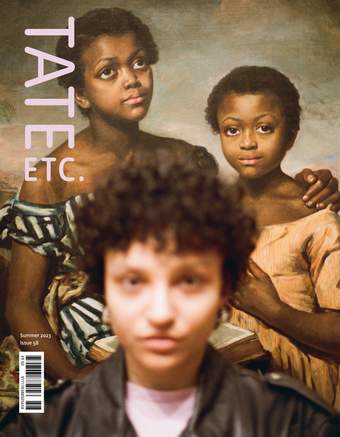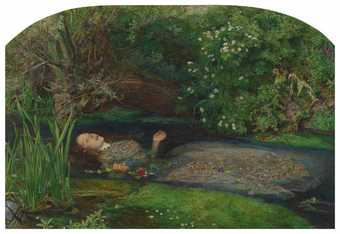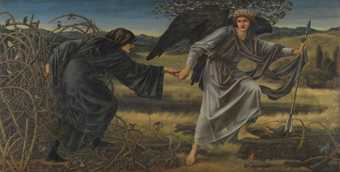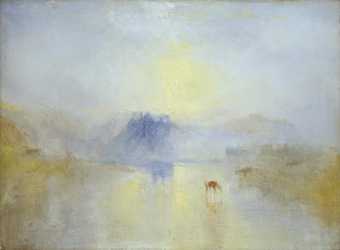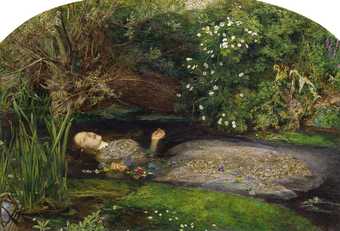
John Everett Millais
Ophelia (1851-2)
Tate
CAROL JACOBI What are you doing here in the Pre-Raphaelite gallery at Tate Britain?
JEREMY DELLER I’m working on a two-part intervention that bookends the room. One end looks at Chartism – the working-class movement for political reform – and the Pre-Raphaelites’ involvement in it, and the other end is about William Morris and how he brought art as we understand it today into ordinary people’s houses, where it had never previously existed.
CJ Was it important that art exploded into other areas, far beyond the narrow definition of art dominated by the Royal Academy, aristocratic tastes and so on?
JD Yes, art left the academy and the system of patronage, and with Morris became what we might call multimedia. He knew, or respected, no boundaries to artistic production, making everything from luxury goods to pamphlets decrying capitalist society. Even the Pre-Raphaelites – who we tend to regard as traditional artists because they painted in a technically accomplished style – chose revolutionary moral subjects. In fact, working in this precise style was itself a statement. They felt excluded from the Royal Academy, so they just started their own club and bypassed the system. This is something we take for granted now – it’s the equivalent, 100 years later, of artists doing this in warehouses in London’s East End.
CJ What they were after was authenticity in art. We know they found academic art artificial, conventional. They were exploring lived experience and putting it into art.
JD I suppose if there is a problem with the Pre-Raphaelite painters, it is that their work is so aesthetically beautiful and well put together, beautifully made, that it’s difficult to marry that to their political beliefs.
CJ Does you think that also echoes how we think about Morris now?
JD Weirdly, the Pre-Raphaelites are still misunderstood and vilified – in the UK, at least. I think there’s sometimes an embarrassment around these artists. People thought Morris’s involvement in politics was ridiculous, and that he was a hypocrite – a rich person being a socialist. Those thoughts remain quite embedded. Morris wanted to make the world a more beautiful place. For him, beauty, which he expressed in his designs, was a weapon against the ugliness, dirt and pollution of the Victorian city. The works are both highly political and beautiful, which is an unusual combination. It’s amazing that, 120 years later, he still provokes debate. He must be important.
CJ What has always struck me is the contrast in generational attitudes towards the Pre-Raphaelites; between my generation, which seems a little uncomfortable with the emotion and sentiment, the idealism that Morris gets mocked for – a bit too muchness – whereas younger generations absolutely love it and embrace it.
JD Can you imagine how many post-cards of Ophelia decorate the bedroom walls of young men and women? It’s this idea of a romantic image. I think that, with the Pre-Raphaelites, there is a yearning, a longing, which maybe, as a teenager, you can identify with. And it’s only when you grow up and become cynical about the world that you don’t want to deal with those emotions or be reminded of your own naivety, your youth. And there’s another side to the Pre-Raphaelites that I think resonates with young people today, which has to do with curating every aspect of your life – living life by some sort of code.
CJ They were young people, I suppose, so maybe it’s not surprising that it appeals to people of a similar age. Those artists never doubted for a moment that art and life were entangled. Take the Rossettis – they’re all thinking about how to live their lives authentically, in a holistic sense. What do we want to wear, what do we want our rooms to be like? And your values are in what you walk down the street in, or what kind of chair you’re sitting on.
JD It’s quite a project. It must have been hard work!
Ophelia was presented by Sir Henry Tate in 1894.
Carol Jacobi is Curator, British Art 1850–1915 at Tate, and curator of The Rossettis, Tate Britain, until 24 September.
Jeremy Deller is an artist based in London. His artistic intervention is on display in the new Pre-Raphaelite gallery at Tate Britain.
To read more of our special feature celebrating Tate Britain's rehang, visit www.tate.org.uk/tate-etc/issue-58-summer-2023/alex-farquharson-tate-britain-the-state-were-in

